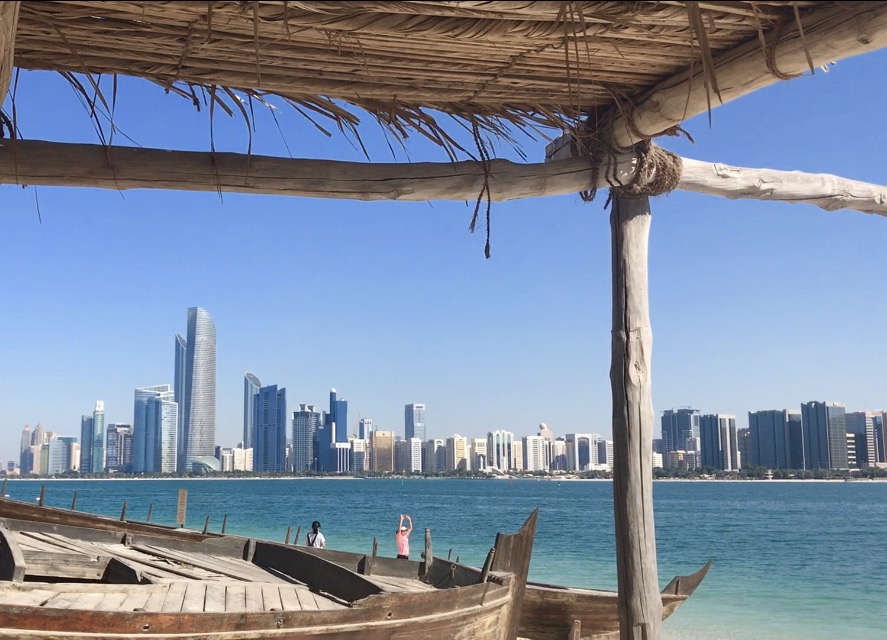In October 2021, the United Arab Emirates announced a plan for net-zero emissions by 2050 and to oversee 600 billion dirhams ($163 billion) in investment in renewable energy. In doing so, it became the first country in the Gulf to pledge a net zero-carbon commitment.
The UAE is, however, far from alone in joining the net-zero bandwagon. According to the United Nations, more than 130 countries have now set or are considering a target of reducing emissions to net zero by mid-century. The UAE’s neighbor and important ally Saudi Arabia, the world’s largest oil producer, has now also pledged to reach net zero by 2060.
This newfound momentum in announcing net-zero pledges has reignited hope in the fight against climate change. This was complimented by a seemingly successful outcome at COP26, with the eventual adoption of the Paris Rulebook, now branded as the ‘Glasgow Climate Pact.’ The COP26 President Alok Sharma said, “COP26 kept the world’s 1.5C limit in reach,” while International Energy Agency (IEA) analysis shows that COP26 climate pledges, if achieved, could limit global warming to 1.8 °C –– a milestone in international climate negotiations even if still not the 1.5 °C targets set at Paris.
But not everyone is as optimistic or hopeful. As much as the net-zero vision has gained traction since COP26, there is little common understanding of what net-zero means. Too often, critics observe, definitions of ‘net-zero’ are tweaked to fit the interests and priorities of individuals, companies, and countries, undermining the temperature goals of the Paris Agreement.
Nevertheless, there is no doubt that carbon offsets will be at the heart of the shift towards net-zero emissions. And there are presently two markets for carbon offsets: voluntary carbon market and the compliance market.
The compliance market for carbon offsets is set under Article 6 of the Paris Agreement. There are two market-based mechanisms under Article 6: Article 6.2 is a bottom-up approach to market mechanisms that can be designed and agreed bilaterally or multilaterally. Article 6.4 is a top-down centrally-governed mechanism through which public and private entities can support GHG emission reductions and sustainable development. Countries can also use non-market approaches that do not involve any transfer of ITMOs (Article 6.8).
The UAE can choose to engage in Article 6 for several reasons, including cost-effective NDC targets, revenue generation, sustainable development co-benefits, technology transfer, capacity building, and financing for expensive mitigation measures as well as adaptation action with mitigation co-benefits.
International carbon markets under Article 6 of the Paris Agreement can either lessen the annual cost of overall mitigation and NDC compliance by more than $250 billion in 2030 or enable the removal of 50% more emissions (or approximately 5 gigatons of carbon dioxide per year in 2030), at no additional cost. Such potential is important to meeting the Paris Agreement goals.
The provisions establishing an international carbon market under the Paris Agreement were agreed at COP26 in Glasgow, finalizing the Paris Agreement Rulebook. These provisions are important since they clarify the role of accounting of carbon credits towards the nationally determined contributions (NDCs) of countries and the scope of international regulation.
On the other hand, the voluntary carbon market facilitates carbon finance from buyers such as large corporations and the private sector in exchange of carbon offsets that can be used to meet their net-zero targets. The Taskforce on Scaling Voluntary Carbon Markets estimates the market for carbon credits could be worth upward of $50 billion in 2030, and the demand for carbon credits could increase by a factor of up to 100 by 2050. Critics, however, are wary of the voluntary carbon market due to the lack of oversight and potential of cheap carbon offsets to flood the market hampering environmental integrity.
The voluntary market is not directly regulated by the Paris Agreement and the Article 6 provisions, but there is a clear signal that mitigation outcomes that are used against any other objective than counted towards a country’s NDC also should be accounted for through corresponding adjustments. This has clear implications for the private sector and corporations which will play a key role in achieving net-zero emission targets.
Carbon offsets will undoubtedly play a key role in enabling the UAE to charter a pathway consistent with net-zero emissions and becoming a climate leader not just in the MENA region but also globally considering UAE’s national circumstances and agenda of economic diversification.
With the Article 6 Rules now finalized, the UAE has an opportunity to be a first mover in operationalizing Article 6. This can not only help the UAE’s domestic ambitions of reducing emissions cost-effectively to reach its net-zero target but also support partner countries by providing them much-needed carbon finance through the purchase of carbon assets.
The UAE will benefit from the development of a strategy that addresses how to make best use of Article 6 in the short term – NDC achievement – and in the longer term – in the net-zero context. The development of an Article 6 strategy will also assist UAE to check possibilities on how it can achieve its NDC cost effectively while aligning the NDC with sustainable finance and green finance activities in UAE.

